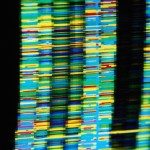Link to Pubmed [PMID] – 25255778
Wiley Interdiscip Rev RNA 2015 Jan-Feb;6(1):141-56
Alternative splicing of precursor RNAs is an important process in multicellular species because it impacts several aspects of gene expression: from the increase of protein repertoire to the level of expression. A large body of evidences demonstrates that factors regulating chromatin and transcription impact the outcomes of alternative splicing. Argonaute (AGO) proteins were known to play key roles in the regulation of gene expression at the post-transcriptional level. More recently, their role in the nucleus of human somatic cells has emerged. Here, we will discuss some of the nuclear functions of AGO, with special emphasis on alternative splicing. The AGO-mediated modulation of alternative splicing is based on several properties of these proteins: their binding to transcripts on chromatin and their interactions with many proteins, especially histone tail-modifying enzymes, HP1γ and splicing factors. AGO proteins may favor a decrease in the RNA-polymerase II kinetics at actively transcribed genes leading to the modulation of alternative splicing decisions. They could also influence alternative splicing through their interaction with core components of the splicing machinery and several splicing factors. We will discuss the modes of AGO recruitment on chromatin at active genes. We suggest that long intragenic antisense transcripts (lincRNA) might be an important feature of genes containing splicing events regulated by AGO.

